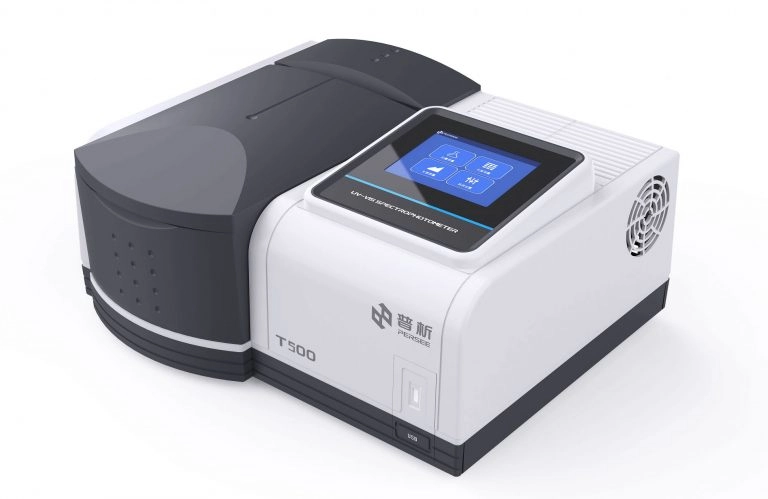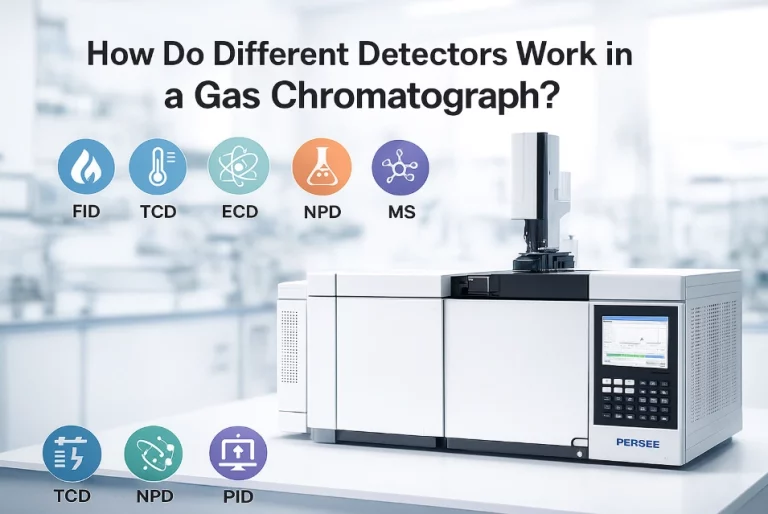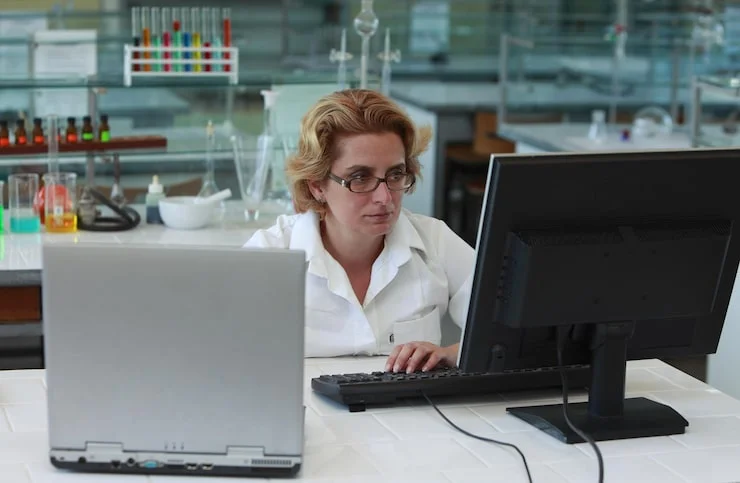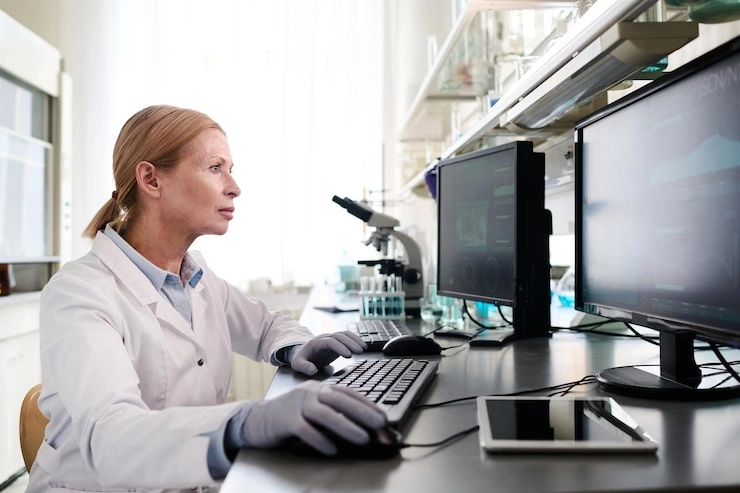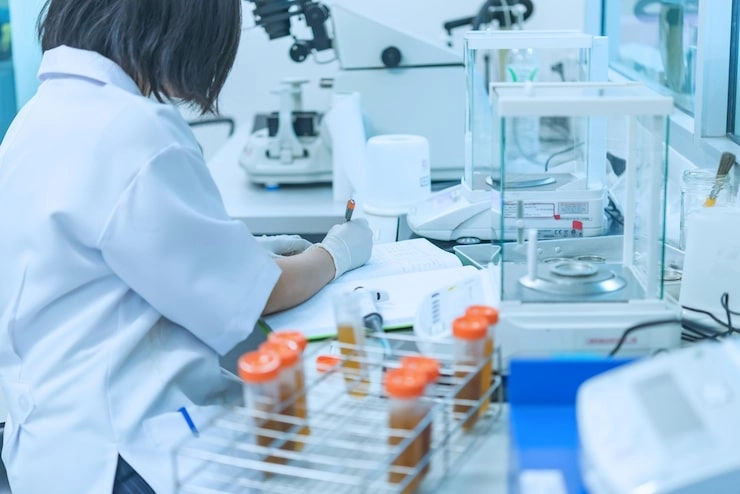
In contemporary chemical analysis, it is important to specify and quantify correctly molecular structures in areas including the pharmaceutical industry and materials science sector. One of the optimal techniques for accomplishing this is Fourier Transform Infrared Spectroscopy (FTIR). The method has transformed how researchers analyze the composition of compounds on a molecular level. First of all, establishing why the Fourier Transform is used in IR spectroscopy proves its function in improving accuracy, speed, and reliability needed for today’s demanding applications.
The Role of Infrared Spectroscopy in Chemical Analysis
Infrared (IR) spectroscopy is a basic tool for chemical characterization. It works by checking how molecules soak up infrared light.
Principles of Infrared Spectroscopy:
IR spectroscopy is based on a simple idea: molecules absorb certain frequencies of IR light. This absorption makes their chemical bonds vibrate. Because every chemical compound has its own special pattern of absorption, its IR spectrum acts like a one-of-a-kind “molecular fingerprint.” This allows scientists to spot functional groups and figure out molecular structures with great certainty.
Applications Across Industries:
IR spectroscopy is used a lot in drug development. For instance, it helps in identifying active ingredients, checking how pure a compound is, and watching the stability of a product. In materials science, it’s a must-have for looking at polymers, coatings, and composites. What’s more, its non-destructive quality makes it perfect for both everyday quality checks and high-level research.
Importance of Accurate Molecular Characterization:
Getting the molecular characterization right is absolutely necessary. It helps to make sure drugs are safe and effective, that companies follow the rules, and that materials perform well. A wrong identification or any contamination can lead to terrible product failures. So, accurate and trustworthy methods like FTIR are indispensable.
Fundamentals of Fourier Transform Infrared (FTIR) Spectroscopy
To see why the Fourier Transform is so important, it’s helpful to see how FTIR is a big step up from older methods.
What is Fourier Transform?
The Fourier Transform is a math tool. It changes raw data from a time-based format into a frequency-based spectrum that we can understand. In an FTIR machine, an interferometer creates an “interferogram”—a complicated signal that has all the infrared frequencies mixed together. The Fourier Transform is the key that turns this signal into the absorption spectrum we are used to seeing.
How FTIR Differs from Dispersive IR:
Old-school dispersive IR spectrometers used a monochromator to look at the spectrum one wavelength at a time. This was a slow and not very efficient way to do things. In contrast, FTIR grabs all the wavelengths at once. This basic difference gives it huge advantages in speed and the quality of the spectrum.
The Technical Advantages of Using Fourier Transform
Using the Fourier Transform offers some game-changing benefits for infrared spectroscopy.
Improved Signal-to-Noise Ratio (Fellgett’s Advantage):
FTIR measures all frequencies at the same time and can average many scans quickly. As a result, it greatly increases sensitivity. This often makes the signal-to-noise ratio (S/N) better by an order of magnitude or more compared to dispersive machines for the same amount of time spent. This is vital when you need to find compounds in low amounts or tiny impurities.
Faster Data Acquisition:
The entire spectrum is caught all at once. Thus, getting the data is incredibly quick—usually just a few seconds. Some systems can even collect a full spectrum in under a second. This speed makes FTIR a great choice for high-volume screening and for watching chemical reactions as they happen.
Higher Resolution and Wavelength Precision (Jacquinot’s Advantage):
FTIR instruments don’t have the physical slits found in dispersive systems. This allows a lot more light (higher throughput) to get to the detector. This energy benefit, along with the exactness of the interferometer’s moving mirror, allows for a higher spectral resolution. Modern FTIR instruments can easily get resolutions of 0.5 cm⁻¹ or better. This is crucial for telling apart peaks that are very close together in complex mixes or for spotting the difference between crystal polymorphs.
Application of FTIR in the Pharmaceutical and Materials Industries
These benefits lead directly to key abilities for important industries.
In Pharmaceuticals:
FTIR is used to quickly identify Active Pharmaceutical Ingredients (APIs). It’s also used to watch for polymorphism. Different crystal forms (polymorphs) of a medicine can affect how well it dissolves and how the body absorbs it. Luckily, FTIR can spot the small changes in the spectrum that show these differences.
In Materials Science:
In this field, FTIR helps identify types of polymers and measure additives like plasticizers. It is also used to check surface coatings. With its high sensitivity, it can find contaminants or leftover monomers at levels often below 0.1%, helping companies ensure their products are made to high standards.
Instrumentation: The Key to Unlocking FTIR’s Potential
While the FTIR method is great in theory, making it work in a real lab or factory depends completely on the quality of the machine itself. Things in the environment like vibrations and temperature changes, plus strict government rules, create problems that only a well-made instrument can handle.
Optical Design and Interferometer Stability:
A stable Michelson interferometer is the core of a trustworthy FTIR. To fight against normal lab vibrations and temperature shifts, advanced systems like the PERSEE FTIR8000 series use a very stable, cube-corner Michelson interferometer that aligns itself. This strong design makes sure the results are repeatable and the machine performs well for a long time. Besides, this is a must-have for approved methods in regulated fields.
Detectors and Sources for Application-Specific Accuracy:
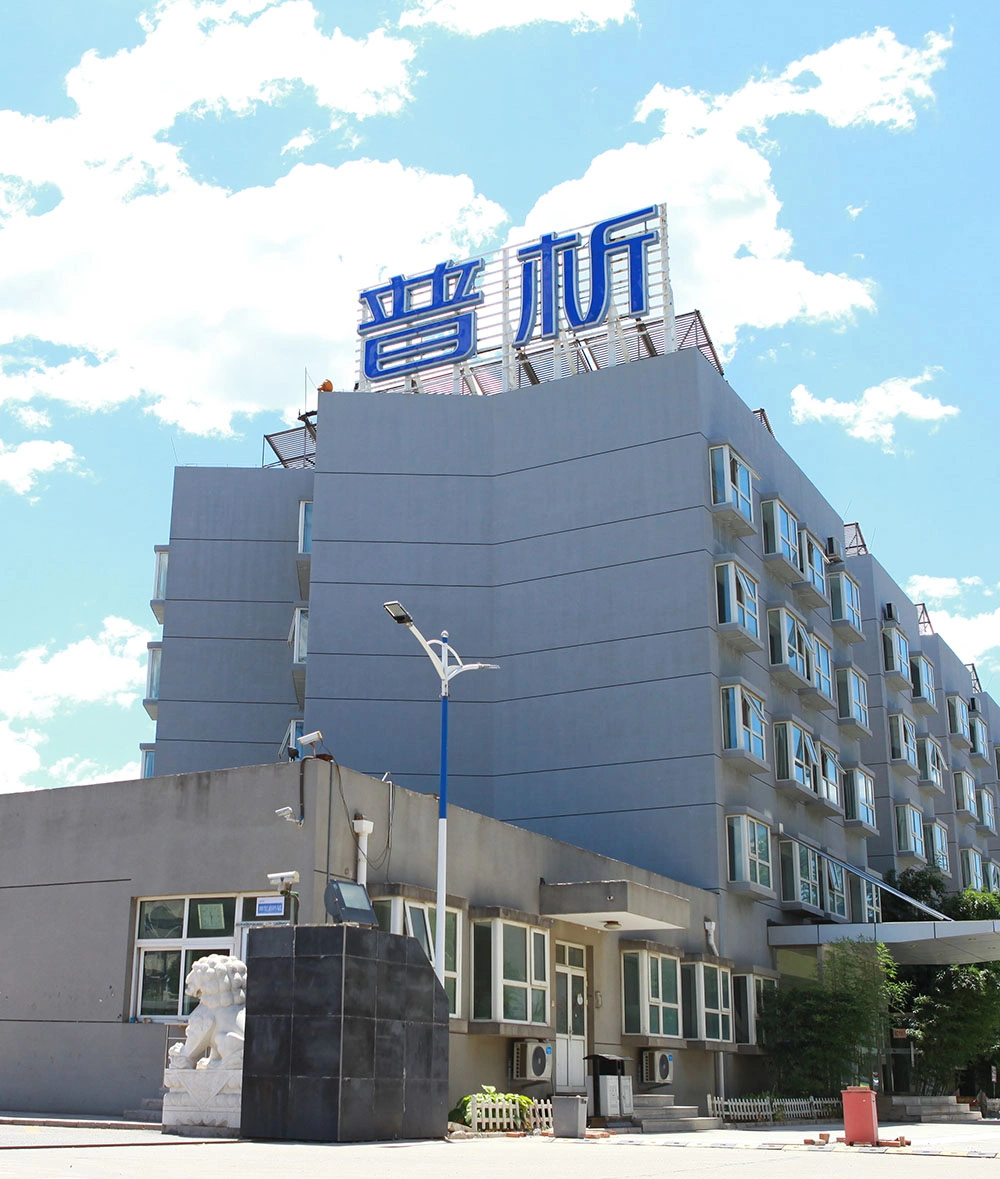
The choice of detector and beam splitter determines the machine’s sensitivity and the range of frequencies it can see. A flexible platform, like the advanced برسي FTIR8100, lets people set up the system with either a normal room-temperature DTGS detector for everyday work or a high-sensitivity MCT detector cooled with liquid nitrogen. The MCT detector is key for tougher jobs like finding trace amounts of something or measuring very thin films where you need the best sensitivity possible. This ability to swap parts ensures the instrument is perfectly set up for the job.
By mixing strong hardware with smart design, these instruments make sure that the theoretical pluses of FTIR—speed, resolution, and sensitivity—are always there in practice. This makes them good for everything from school research to strict industrial quality control.
Frequently Asked Questions (FAQs):
Q1: Why is Fourier Transform preferred over traditional IR methods?
A: Fourier Transform lets you measure all the infrared wavelengths at the same time. This leads to much faster data collection and a way better signal-to-noise ratio. This improved sensitivity makes FTIR perfect for looking at tiny components and complex mixtures much better than the old dispersive methods ever could.
Q2: Can FTIR be used for both qualitative and quantitative analysis?
A: Yes, absolutely. FTIR is very flexible. It gives you a qualitative ID from the substance’s unique “molecular fingerprint.” It’s also great for quantitative work, where the strength of certain absorption bands is linked to how much of a component is there, using a calibration model.
Q3: What key features should I look for when selecting an FTIR for a regulated pharmaceutical or advanced materials lab?
A: For tough jobs, you need to look past the basic numbers. Some key things to look for are: 1) A high-stability interferometer to make sure results are consistent even when conditions change. 2) High signal-to-noise ratio and resolution to spot trace elements and tell similar structures apart. 3) Software that meets rules like FDA 21 CFR Part 11, which needs things like secure audit trails, electronic signatures, and user access limits. 4) Flexibility to use different sampling tools like ATR or diffuse reflectance. Instruments like the PERSEE FTIR8000 series are made to cover these points, offering a solid and compliant option for really important work.

